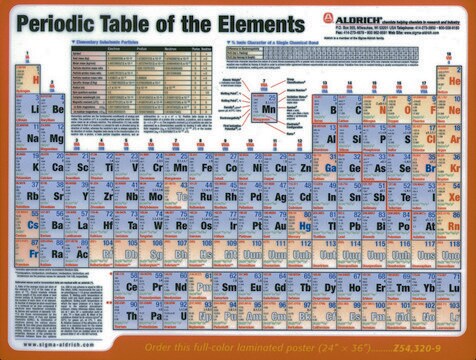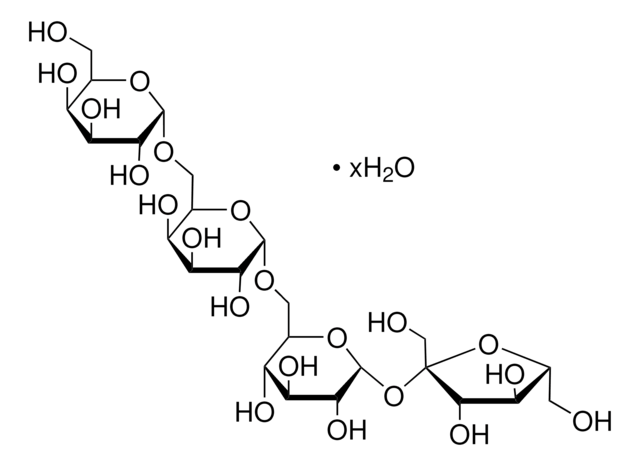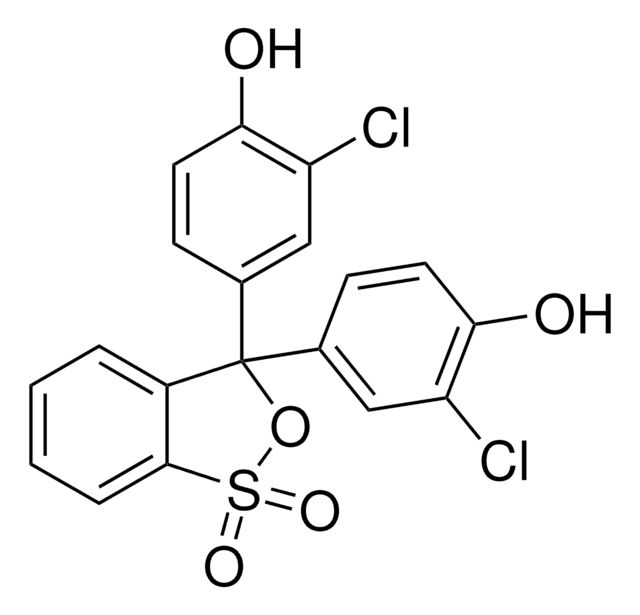Kluczowe dokumenty
M2250
D-(+)-Maltose monohydrate
Type II, ≥95%
Synonim(y):
4-O-α-D-Glucopyranosyl-D-glucose, Maltobiose
About This Item
Polecane produkty
pochodzenie biologiczne
corn
Poziom jakości
typ
Type II
Próba
≥95%
Formularz
powder
aktywność optyczna
[α]20/D 129 to 131 °, c = 4% (w/v) in water + trace NH4OH
zanieczyszczenia
≤1.5% Glucose
≤5% Maltotriose
kolor
white
przydatny zakres pH
5.0-7 (25 °C, 180 g/L)
mp
125.13 °C (1013.25 hPa)
rozpuszczalność
180 g/L at 20 °C
temp. przechowywania
room temp
ciąg SMILES
O.OC[C@@H](O)[C@@H](O[C@H]1O[C@H](CO)[C@@H](O)[C@H](O)[C@H]1O)[C@H](O)[C@@H](O)C=O
InChI
1S/C12H22O11.H2O/c13-1-4(16)7(18)11(5(17)2-14)23-12-10(21)9(20)8(19)6(3-15)22-12;/h1,4-12,14-21H,2-3H2;1H2/t4-,5+,6+,7+,8+,9-,10+,11+,12+;/m0./s1
Klucz InChI
HBDJFVFTHLOSDW-DNDLZOGFSA-N
Szukasz podobnych produktów? Odwiedź Przewodnik dotyczący porównywania produktów
Zastosowanie
- Ocena zmian właściwości chemicznych i mikrobiologicznych zakwasów produkowanych przy użyciu wybranych szczepów bakterii kwasu mlekowego podczas fermentacji: Badania te badają wykorzystanie monohydratu D-(+)-Maltozy w procesach fermentacyjnych, podkreślając jego wpływ na dynamikę chemiczną i mikrobiologiczną w technologii żywności, istotną dla przemysłowych zastosowań biosyntezy w sektorze nauk przyrodniczych (Boyaci Gunduz et al., 2022).
Działania biochem./fizjol.
Inne uwagi
Kod klasy składowania
13 - Non Combustible Solids
Klasa zagrożenia wodnego (WGK)
WGK 1
Środki ochrony indywidualnej
Eyeshields, Gloves, type N95 (US)
Wybierz jedną z najnowszych wersji:
Masz już ten produkt?
Dokumenty związane z niedawno zakupionymi produktami zostały zamieszczone w Bibliotece dokumentów.
Klienci oglądali również te produkty
Nasz zespół naukowców ma doświadczenie we wszystkich obszarach badań, w tym w naukach przyrodniczych, materiałoznawstwie, syntezie chemicznej, chromatografii, analityce i wielu innych dziedzinach.
Skontaktuj się z zespołem ds. pomocy technicznej









